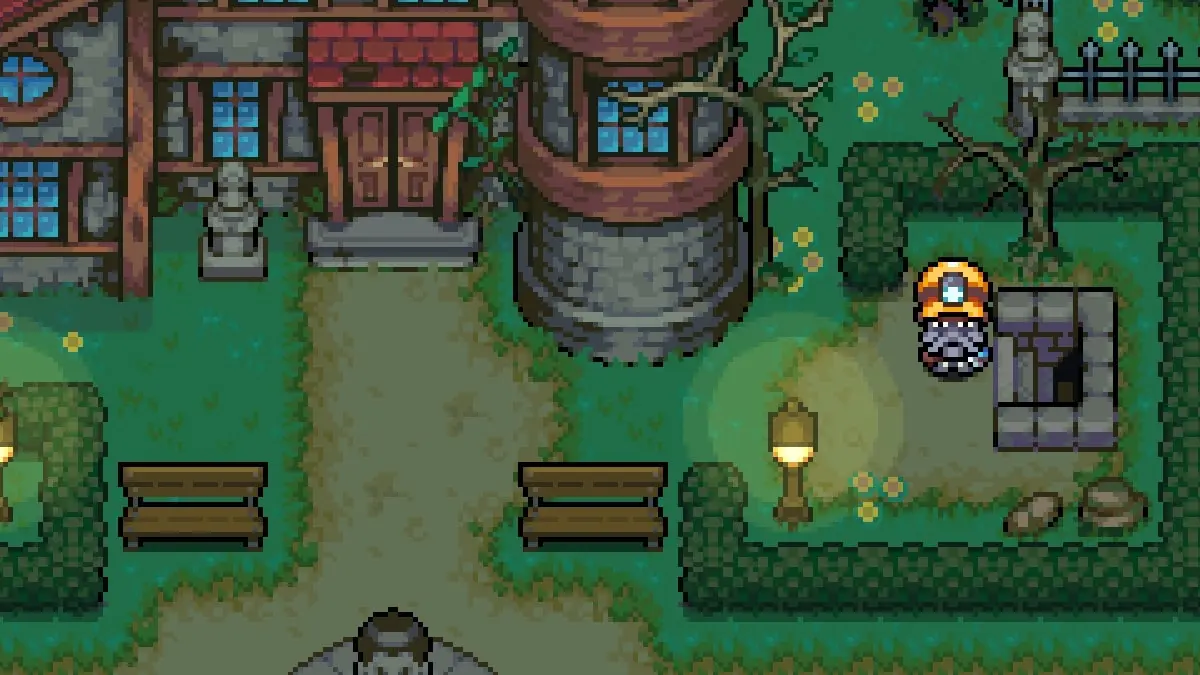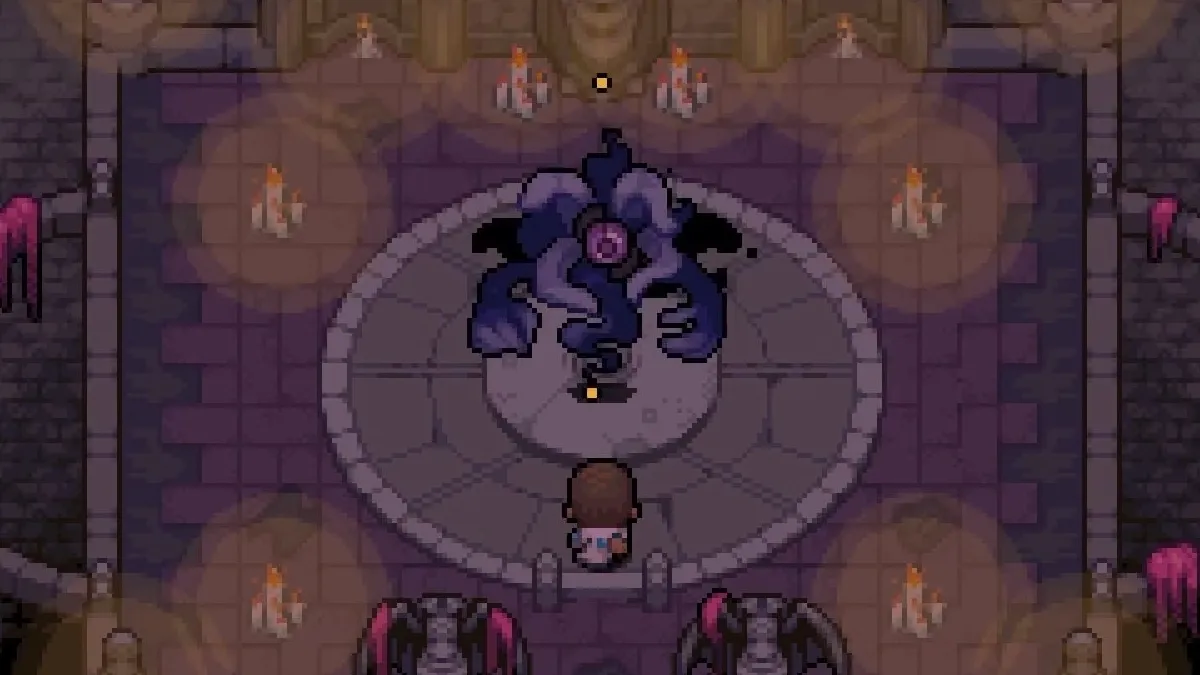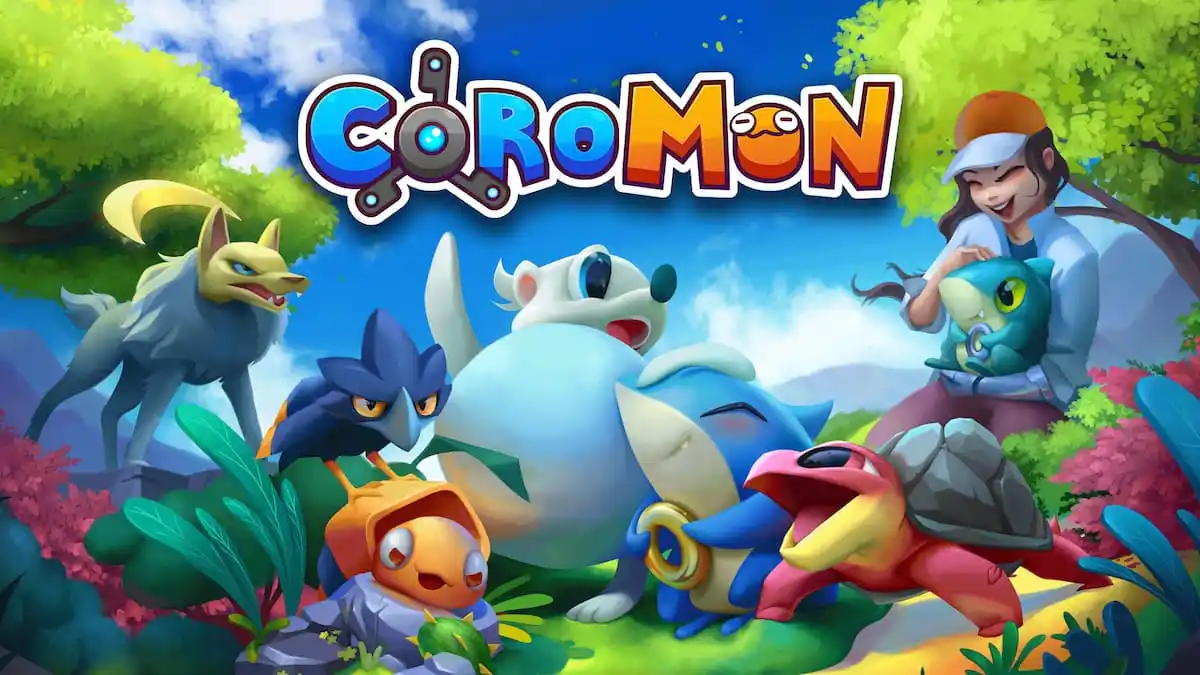Let’s start by addressing the elephant in the room. Pokémon has had a chokehold on the collectible monster genre for so long, that adults with Pokémon in their childhood are now having children and passing their card collections down like precious generational heirlooms. I’m one of those adults. I’ve spent so much of my life on Pokémon that I presented myself with an entirely ritualistic challenge run before getting my Pokémon tattoo.
One of my greatest regrets in life is missing out on the chance to buy myself the life-size Mareep plush before the secondary market got a hold of it and tripled the price. The shadow of Coromon’s competition looms large. Anybody even thinking about dipping a toe into the collectible monster game is going to be staring down the barrel of a very, very long gun. What does it mean to make your own take on games like this? How can it be done successfully? Can Coromon wrest away some control over the collectible monster game?
Is this just Pokémon with extra steps?
The first thing most folks are going to be looking for when finding a game like Coromon is something familiar to latch onto. Not many that come across this game are going to be finding it without prior Pokémon knowledge. Pokémon, for better or worse, has carved out an incredibly unique niche within JRPGs. There really aren’t many turn-based battle systems that allow for one on one combat, hyper-flexible character stats, entirely customizable move pools, and head-to-head competition. Throwing your hat into this ring means that fans of the genre are looking for most (if not all) of these features.
Coromon keeps the familiar perspectives, wild monster encounters in patches of grass or other overworld tiles, a familiar near-future setting, and type effectiveness interactions. You still travel from location to location with a team of six monsters that grow with experience gained from battle. Simple puzzles gate you into each area until you gain a tool with which to topple them.
These similarities make it easy to slip into Coromon like a familiar pair of jeans. However, the differences that this game uses to stand firmly apart from Pokémon quickly show themselves. Your Coromon use a stamina meter that governs the actions they can take, rather than the familiar Power Points allotted to each move that Pokemon deploys. Some of the types you find in Coromon are skill-exclusive rather than having a representative in the species pool. You’ll find this changes the realm of type interactions a player is responsible for learning while remaining complex enough to create points of friction in the battles.
Coromon come in three different color palettes that reflect “potential,” a secondary bar of experience that fills up in tandem with your level experience. When this bar fills, you’re rewarded with additional points to freely allocate to your Coromon’s stats. Coromon with higher potential are more rare than their weaker counterparts and receive these points more often, making them stronger and more unique in the long run than Coromon with lower potential. This is a clever way to nod to shiny hunters and dedicated Pokemon breeders while surfacing a mechanic in Coromon that Pokémon would normally obscure.

Does it work?
I will admit I came into my Coromon experience a bit skeptical. I was ready to pick it apart for relying too much on my assumed prior knowledge of Pokémon games. Maybe it wasn’t going to be able to capture the magic of falling in love with the perfect Pocket Monster. Time and again I was proven wrong.
If anything, Coromon does a much better job explaining its inner workings than Pokémon ever has. To this day, players need to seek out extensive, labyrinthine, fan-made guides to breeding the perfect Pokémon before they can come anywhere near having a decent time playing the secret second game Pokémon has been hiding under the hood of their base experience. Which is an understandable concession that Pokémon’s main series titles have had to make because they’ve been backed into the impossible position of catering to the six-year-old I was when I first played and the thirty-year-old I’ve become due to the relentless march of time.
Coromon is confident enough in its identity to challenge my assumptions at perfectly spaced intervals through the game’s introductory sequence. When the type match-ups were dumped in front of me for the first time, I thought I was going to be left on my own to figure out because I “should know how it works,” but I then discovered how much information you’re given access to during battles. The first time I was handed a handful of potential points to spread out across my Coromon’s stats, I was baffled and fully expected to have to puzzle this out myself or with the community once the game is released in full, but a side quest funneled me straight to a short stack of books that patiently explained the game’s more intricate mechanics without front-loading it the way a lesser RPG might have.

The verdict
Coromon feels like a fresh Pokémon game made by fans that knew they could do something great with a well-established formula. This game treads familiar ground without allowing itself to sink into the muck. The combat is engaging from moment to moment — I never felt like I was going through the motions to gobble up extra experience.
The levels of Coromon, both wild and tamed, you encounter throughout your journey are kept in pace with your team masterfully to keep you on your toes at all times. Money can be tight, so your problems aren’t all solved by pouring healing items all over the battlefield. The flexible and customizable difficulty means that fresh players unfamiliar with monster collecting and battling can wade in comfortably, and hardcore Nuzlocking, ROM hack playing, diehard Pokémon fans can cut their teeth on nail-biting challenges that leave this game open to fresh repeat playthroughs.
Coromon gives me faith in the world of not-Pokémon games that I, frankly, didn’t think I would ever have. It’s a game capable of totally distinguishing itself, despite nearly thirty years of tradition in this niche genre. It speaks to the passion and keen eye for design that the folks at TRAGsoft had, and the time they poured into this game for the last five years has certainly paid off.
Final Score:
9 / 10
| + | A wonderfully executed personalized love letter to a niche corner of JRPGs. |
| + | The density of experiences in each area lend this game a strong sense of place. |
| – | If you’re looking for a total departure from a familiar Pokémon formula, this isn’t it. |
| – | The awards for minor achievements are neat, but feel like they belong in a different game. |
Gamepur team received a PC code for the purpose of this review.





Published: Mar 30, 2022 09:00 am